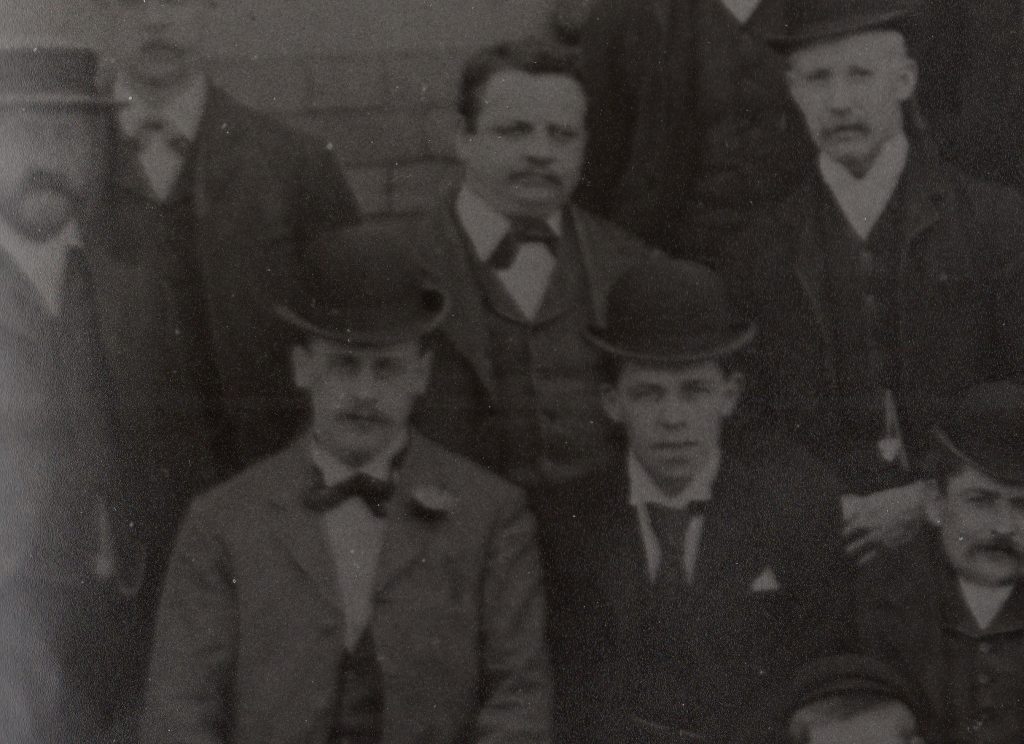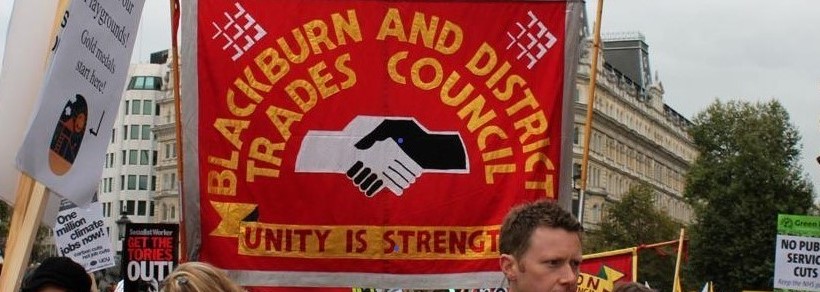The April Annual General Meeting of Blackburn and District Trades Union Council was addressed by a guest speaker, Professor Ralph Darlington, who has just published a new book “Labour Revolt in Britain 1910-14”.
His book may seem to have come out at a very apposite time, given that its appearance corresponds with a contemporary upsurge in strikes. From the outset, Ralph urged caution, however, in jumping to conclusions about similarities or history repeating itself.
The events of 1910-14 were of a much higher level of intensity than anything we have so far seen today. At the same time, nevertheless, some of the issues identified – such as relations between Union officials and the rank-and-file, or between political and industrial aspirations – do keep recurring across our history, and so the study of it may help our understanding of them.
In 1911, 9 per cent of the total industrial population was involved in strikes of various length, as compared with 2.6 per cent for 1902, 1.4 per cent for 1907, and an average of 2.9 per cent for the period 1902-1911. The number of persons directly involved in strikes beginning in 1912 was 1,233,116 as compared with 67,653 in 1905 and 223,969 in 1908. Figures of the aggregate duration of strikes in working days show a significant increase in 1910-1914 over the average of the years 1902-1909.
This was felt by people at the time to represent something significant. “It needs hardly be stated”, wrote Trades Council Secretary, James Frankland, in the 1912 Trades Council Report, “that the past year has probably been the most eventful one that Trade Unionism has ever passed through. We have, indeed, witnessed a real wakening of Labour, and we are glad that the Council has taken an active interest in the great struggle of the year. We believe that the “Labour Unrest” is more than justified, and that the time has come when the employing classes will be made to disgorge the wealth they have been able to filch from the Workers”.
Ralph prefers the usage “Revolt” to that of “Unrest”, because he feels that the former better captures the character of the participants in the disputes who were quite conscious of the fact that they were presenting a determined challenge to the established order.
What led to things kicking off is quite difficult to pin down, but it seems to have involved a mixture of economic and ideological issues. Real wage statistics are difficult to compile for a period over 100 years ago, but the general consensus seems to be that there had been a noticeable period of growth from the 1880s to 1900, followed by a period of relative stagnation – some analysts identify a dip, or a fall in particular years, such as 1908-09; some a period of much slower growth compared with what had gone before. The working class that lived through this difficult period was one that had grown in aspirations, self-confidence and organisation across the latter half of the nineteenth century – but it was by no means living in the lap of luxury and it could see besides it the “golden age” of the Edwardian middle class.
The condition of workers also varied between industries. Some of the biggest disputes were to take place in sectors – mines, docks, railways -where their situation was more precarious. The strikes did not take place simply for the sake of striking, but because there were deep-seated and specific industrial grievances that workers at last felt confident enough to tackle by taking action. The miners, for instance, had a bugbear that piece rates did not adequately take into account the difficulty of working “abnormal places”.
It may also be significant that the “Revolt” followed closely on the “Osborne Judgement” (which ruled that it was unlawful for trade unions to use funds raised from their subscriptions for political purposes including funding the Labour Party) and the struggle over the budget of 1909, which had led to a constitutional crisis over the powers of the House of Lords. Even the establishment was clearly intent on undermining confidence in the “political” route to change.

In the short time available for his talk, Ralph was not able to go in detail over everything covered in his book – but what he did do was highlight some of the aspects of the situation that he covered, and one of these was the “zeitgeist”, the “something in the air”, that affected social attitudes and behaviours. There was a sense of old limitations being broken down, whether this be regarding the campaigns for Irish independence or women’s’ suffrage or in respect of the class struggle.
Ralph was keen to emphasise how much of the energy driving the strikes came from an unofficial militancy and rank and file pressure. In his book he says: “It was a revolt dominated by unskilled and semi-skilled workers, encompassing both members of established and recognised trade unions, and also workers hitherto unorganised and/or unrecognised who became engaged in a fight to build collective organisation and for union recognition against the hostility of many employers. Action largely took place independently and unofficially of natonal trade union leadershiops whose unresponsiveness to workers’ discontents, endeavours to channel grievances through established channels of collective bargaining…….was often rejected by workers infavour of militant organisation…”.
His book also looks at how “workers’ readiness to engage in militant strike action also often critically depended upon the encouragement they received from the minority of uncompromising” (radical left) “propagandists and agitators within their own ranks”.
Ralph also noted that whilst the suffrage and labour campaigns often seemed to run parallel to each other, there were nonetheless some very important linkages that have often been missed. Women workers—although the numbers involved were only a fraction of the larger number of male workers—were engaged in a very active way, particularly young women. They sat on strike committees alongside men, and they played an active role.
Whilst tension between Trade Union structures and the rank-and-file was a recurring theme, the broad outcome of the movement was to consolidate and grow Trade Union organisation. Membership rose from 2.5 million in 1910 to 4.1 million in 1914, and this laid a foundation for continued growth during and after the First World War – to 6 million in 1918 and to 8 million in 1920.
We are grateful that Ralph came to speak to us and his talk was very well received. “Labour Revolt in Britain 1910-14” is widely available from bookstores, or direct from the publisher here:
Labour Revolt in Britain 1910-14 (plutobooks.com)
The main business item at the AGM was the election of officers for 2023/24. Delegates had been advised previously that both Karen Narramore and Vikki Dugdale felt that they needed to relinquish their positions due to domestic and other work and TU commitments, so we needed to “refresh” some of our senior positions.
Bob Welham (GMB) was elected to the post of President and Paul Morley (UNITE) was elected to the post of Secretary (with retired Secretary Ian Gallagher continuing to provide some administrative support). Peter Dales (UNISON) agreed to continue as Treasurer and Vikki Dugdale (UNISON) agreed to accept a position as a Vice President, alongside John Southwell (CWU).
We are thankful for the support given by Karen and Vikki during a difficult period for the Trades Council, when there has been a question mark over our ability to continue to survive.
It was noted that two dates were approaching when we would be asking members and supporters to give expressions of solidarity.
On Friday 28th April, at 12.30pm, we would be holding our annual Workers’ Memorial Day commemoration at the memorial tree at the Sudell Cross end of Northgate in Blackburn. Then, on Tuesday May 2nd, there will be a rally in support of the teachers’ national pay dispute in Darwen town centre, by the big bird (Darwen Flag Market); assemble 10:45am for an 11am start.

